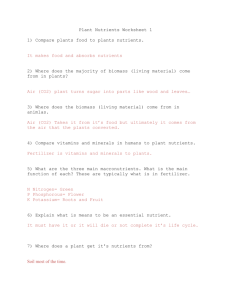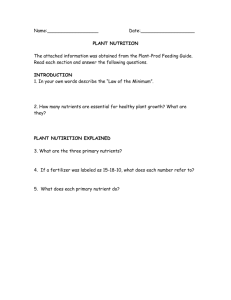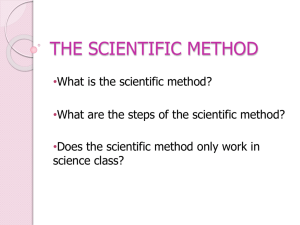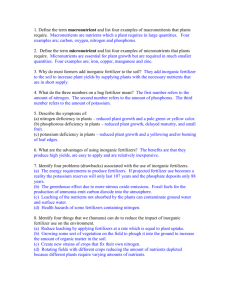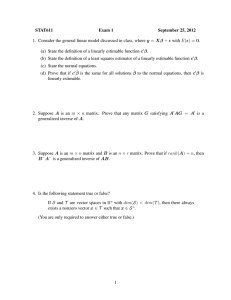WATER POTENTIAL LAB
advertisement
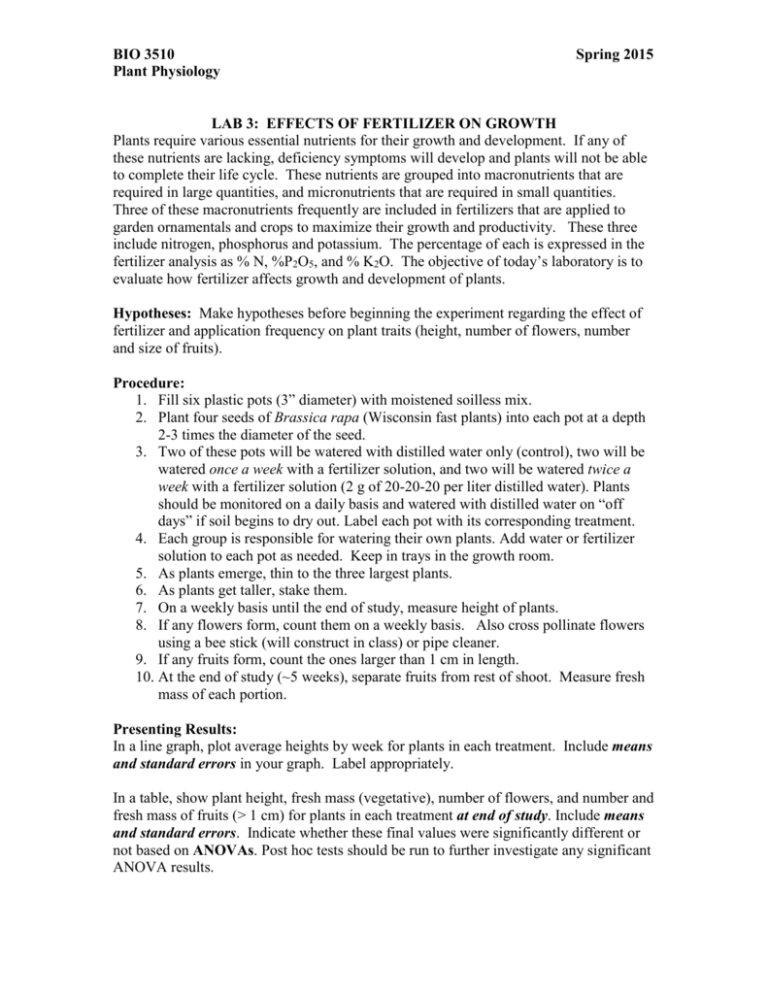
BIO 3510 Plant Physiology Spring 2015 LAB 3: EFFECTS OF FERTILIZER ON GROWTH Plants require various essential nutrients for their growth and development. If any of these nutrients are lacking, deficiency symptoms will develop and plants will not be able to complete their life cycle. These nutrients are grouped into macronutrients that are required in large quantities, and micronutrients that are required in small quantities. Three of these macronutrients frequently are included in fertilizers that are applied to garden ornamentals and crops to maximize their growth and productivity. These three include nitrogen, phosphorus and potassium. The percentage of each is expressed in the fertilizer analysis as % N, %P2O5, and % K2O. The objective of today’s laboratory is to evaluate how fertilizer affects growth and development of plants. Hypotheses: Make hypotheses before beginning the experiment regarding the effect of fertilizer and application frequency on plant traits (height, number of flowers, number and size of fruits). Procedure: 1. Fill six plastic pots (3” diameter) with moistened soilless mix. 2. Plant four seeds of Brassica rapa (Wisconsin fast plants) into each pot at a depth 2-3 times the diameter of the seed. 3. Two of these pots will be watered with distilled water only (control), two will be watered once a week with a fertilizer solution, and two will be watered twice a week with a fertilizer solution (2 g of 20-20-20 per liter distilled water). Plants should be monitored on a daily basis and watered with distilled water on “off days” if soil begins to dry out. Label each pot with its corresponding treatment. 4. Each group is responsible for watering their own plants. Add water or fertilizer solution to each pot as needed. Keep in trays in the growth room. 5. As plants emerge, thin to the three largest plants. 6. As plants get taller, stake them. 7. On a weekly basis until the end of study, measure height of plants. 8. If any flowers form, count them on a weekly basis. Also cross pollinate flowers using a bee stick (will construct in class) or pipe cleaner. 9. If any fruits form, count the ones larger than 1 cm in length. 10. At the end of study (~5 weeks), separate fruits from rest of shoot. Measure fresh mass of each portion. Presenting Results: In a line graph, plot average heights by week for plants in each treatment. Include means and standard errors in your graph. Label appropriately. In a table, show plant height, fresh mass (vegetative), number of flowers, and number and fresh mass of fruits (> 1 cm) for plants in each treatment at end of study. Include means and standard errors. Indicate whether these final values were significantly different or not based on ANOVAs. Post hoc tests should be run to further investigate any significant ANOVA results. 2 Questions to Consider: 1. What nutrients do plants require? How do these nutrients help plants to grow and survive? How are they used by the plant? 2. What symptoms might a plant display (i.e. shriveled leaves) if it lacks specific nutrients? 3. How did fertilizer affect height growth of plants over time? 4. What effect did fertilizer have on growth of reproductive tissues (i.e. flowers and fruits)? 5. Did you notice any differences in plant color over time? If so, what compounds in the fertilizer may have been involved? 6. What do any observed differences tell you about the effect of fertilizer on plant traits? 7. If you repeated this experiment, what might you do differently? Are there additional tests that could be done to expand on your results?

